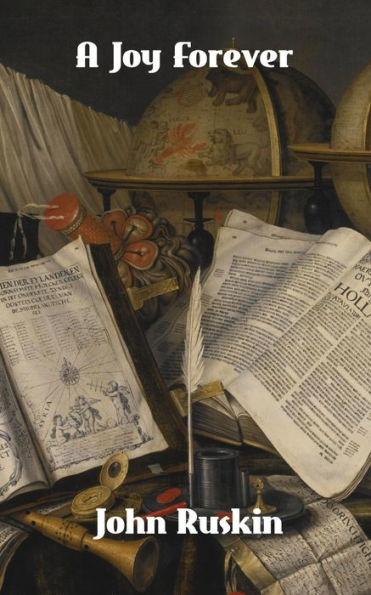A Joy For Ever; (And Its Price in the Market)is an art history classic by John Ruskin that contains two lectures on the political economy of art.The title of this book,—or, more accurately, of its subject;—for no author was ever less likely than I have lately become, to hope for perennial pleasure to his readers from what has cost himself the most pains,—will be, perhaps, recognised by some as the last clause of the line chosen from Keats by the good folks of Manchester, to be written in letters of gold on the cornice, or Holy rood, of the great Exhibition which inaugurated the career of so many,—since organized, by both foreign governments and our own, to encourage the production of works of art, which the producing nations, so far from intending to be their "joy for ever," only hope to sell as soon as possible
"1100175288"
A Joy For Ever
A Joy For Ever; (And Its Price in the Market)is an art history classic by John Ruskin that contains two lectures on the political economy of art.The title of this book,—or, more accurately, of its subject;—for no author was ever less likely than I have lately become, to hope for perennial pleasure to his readers from what has cost himself the most pains,—will be, perhaps, recognised by some as the last clause of the line chosen from Keats by the good folks of Manchester, to be written in letters of gold on the cornice, or Holy rood, of the great Exhibition which inaugurated the career of so many,—since organized, by both foreign governments and our own, to encourage the production of works of art, which the producing nations, so far from intending to be their "joy for ever," only hope to sell as soon as possible
2.99
In Stock
5
1

A Joy For Ever

A Joy For Ever
Related collections and offers
2.99
In Stock

Product Details
| BN ID: | 2940162547952 |
|---|---|
| Publisher: | Whispering Pines Press |
| Publication date: | 07/07/2021 |
| Sold by: | Barnes & Noble |
| Format: | eBook |
| File size: | 447 KB |
About the Author
From the B&N Reads Blog
